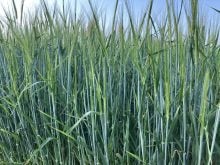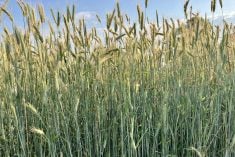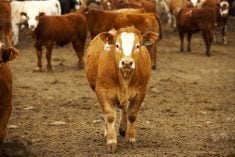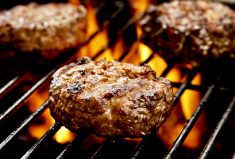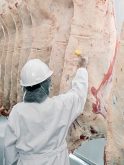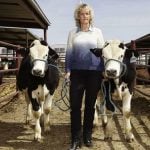Every dairy animal becomes a beef animal.
However, many unknowns remain about how to best manage these animals when they arrive at the calf ranches and feedlots. When it comes to finishing dairy breeds, any feeder knows that these cattle are about as similar to regular beef cattle as Labrador retrievers are to pugs. Years of heavy selection have created an animal that is phenomenal at taking energy and diverting it to lactation — even at the expense of body reserves. What makes the female dairy cow a biological wonder is exactly what makes the male dairy animal so ill-prepared for his career as a feedlot steer.
Even more than beef cattle, dairy and dairy-cross cattle require growth-promoting implants to improve feed efficiency and weight gain. However, using traditional implant programs designed for full beef cattle can be detrimental to carcass quality and the bottom line for feeders.
Read Also
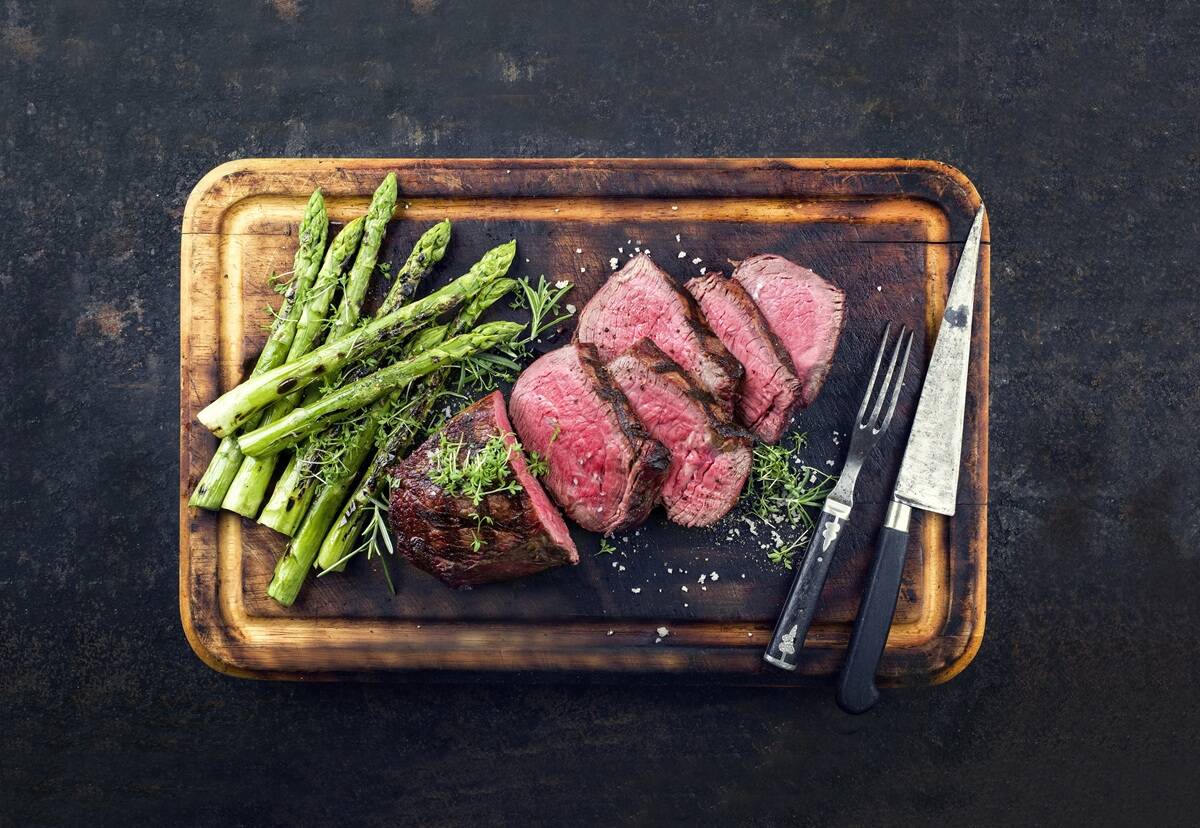
Building demand together: The impact of Canada’s beef import levy
The beef import levy has become a central tool for ensuring balance in Canada’s beef industry
There are three things to be mindful of managing when implanting Holstein and cross cattle: final carcass weight, feed efficiency and riding behaviour.
The biggest challenge in feeding Holstein cattle is achieving a product that meets consumer expectations — in other words, producing a finished animal that will yield similarly to a straight beef animal. Holsteins, and to a certain extent crosses, have a much larger frame than beef cattle. While we can bring British and continental beef breeds to their maximum mature weight with implants, we don’t with Holsteins. For one thing, there are the slaughter plant limitations to carcass size. For another, there is an upper limit to the size of meat cuts that consumers want. But for the cattle feeder, the most important reason is how drastically feed efficiency declines as the animal reaches a mature frame size. Therefore, Holstein cattle can’t be allowed the same fattening period at the end of finishing that beef cattle are.
This presents an issue with implant use in Holstein cattle. While the feed efficiency that growth-promoting implants provide is desperately needed to finish Holstein cattle economically, their use inherently promotes lean tissue deposition over fat deposition, which can further hurt carcass grades in an animal that already has a limited fattening period. Therefore, developing an implant protocol that maximizes feed efficiency without sacrificing quality grade or producing a heavy-framed animal is crucial when finishing Holstein cattle.
Dairy or beef?
What does the industry know about optimal Holstein and dairy-cross implant programs? Not as much as we would like. Research is still relatively scarce, though research investment grows as dairy crosses become more common in feedyards. One of the biggest questions that needs to be answered for dairy-cross cattle is this: does the dairy-cross animal perform more like a dairy animal, or a beef animal? The answer will depend on which specific trait you are looking at as well as the genetics of the beef bull used. You might expect that the dairy-cross steer, being 50 per cent dairy and 50 per cent beef, behaves and performs halfway between a Holstein steer and a beef steer. Recent experience has shown us that’s not the case. Instead, dairy-cross cattle will perform closer to beef cattle. However, they appear to respond differently to implants. Anecdotal evidence shows that within a lot, some cattle will respond to implants as though they are two-thirds beef cattle, while others will respond as though they’re only one-third beef.
Holstein cattle are extremely sensitive to trenbolone acetate (TBA), a testosterone synthetic that is commonly used in finishing implants because of its potency. The dose of TBA in an implant influences riding behaviour. It’s also hypothesized that the total TBA an animal gets over its lifetime may increase riding behaviour. This means that implant programs for Holstein steers should not only avoid high doses of TBA in the terminal implant, but likely avoid repeated TBA exposure from a very light weight. A general rule is to avoid implants with 200 mg of TBA unless the implant is a slow-release implant, and therefore doesn’t reach the same peak blood TBA levels as an immediate-release 200-mg TBA implant.
Does this mean that Holstein steers should receive progesterone- and estrogen-based implants as soon as possible instead? Research suggests that this is not a preferred strategy, either (Evaluation of long-acting implant programs for calf-fed Holsteins Quinn et al, Applied Animal Science). Implanting Holstein steers with a low-dose implant, containing only estrogen and progesterone at 145 kg, did not improve performance, decreased feed efficiency and increased riding behaviour compared to delayed implantation. Holsteins implanted on arrival have been found to have similar performance to Holsteins implanted at 120 days on feed.
Implant protocols
With that in mind, a delayed implant program in Holsteins is probably the most economical choice. How delayed? Waiting until calves reach at least 500 pounds is an appropriate plan. At this weight, calves can be implanted with a low TBA dose implant (no more than 100 mg TBA for immediate-release implants or 150 mg TBA for slow-release implants). Another consideration with Holsteins is terminal re-implantation timing. Running a pen full of 1,200-lb. and greater steers through the chute to put in an implant isn’t fun. Using a long-acting terminal implant that pays out over 150 to 200 days allows cattle to be implanted at a lighter weight when they are easier to handle and physically fit better in facilities.
Example Holstein implant protocol
Terminal implant: long-acting 200-mg TBA implant at 900 lbs.
Mid-feeding implant: long-acting 100-mg TBA implant at 500 lbs.
This protocol assumes a three-lb.-per-day gain and a 1,500-lb. slaughter weight.
Implant programs for dairy-cross cattle have more flexibility. However, as with straight Holstein cattle, avoid implants with 200 mg of TBA unless the implant is slow-release, to account for the cattle that respond more like two-thirds Holsteins.
Example dairy-cross implant protocol
Terminal implant: long-acting 200-mg TBA implant at 900 lbs.
Mid-feeding implant: 100-mg TBA implant at 500 lbs. or a long-acting 150-mg TBA implant at 300 lbs.
This protocol assumes a 3.35-lb.-per-day gain and a 1,500-lb. slaughter weight.
What about heifers? As more beef semen is used in the dairy sector, more dairy-cross heifers will be produced. While the female Holstein becomes a dairy cow, the female dairy-cross has only one destination: the feedlot.
Dairy-cross heifers produce a unique management challenge. While they may perform more like beef heifers, their maternal dairy traits can present differently than they do in steers. Dairy-cross heifers can develop pseudo-udders that are thought to be related to growth-promoting implants. One recommendation is to keep both TBA and estrogen low in these cattle.
Example dairy-cross heifer implant protocol
Terminal implant: 100 mg TBA and no more than 10 mg estrogen
Mid-feeding implant: 100 mg TBA and no more than 10 mg estrogen
We still have much to learn about implanting dairy-cross cattle, and to some extent, Holstein cattle. As more feedlots fill their pens with dairy-crosses, the need for better management will drive more research and allow us to increase the precision of our programs.
– Dr. Lexie Reed is a food animal veterinarian at Sunny South Veterinary Services in Lethbridge, Alta.




